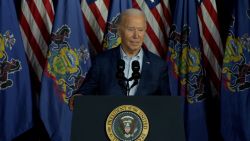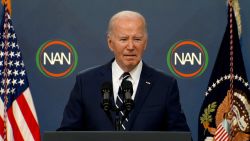President Joe Biden is reopening enrollment on the federal Affordable Care Act exchanges as part of two health care executive actions that he signed Thursday, taking a step to help uninsured Americans that former President Donald Trump rejected.
It’s Biden’s first move toward delivering on his campaign promise to bolster the landmark health reform law that he championed as vice president. And it comes as more Americans could be facing the loss of coverage because of the pandemic-fueled economic downturn.
“Today, I’m about to sign two executive orders that basically, the best way to describe them, to undo the damage Trump has done,” Biden said. “There’s nothing new that we are doing here other than restoring the Affordable Care Act and restoring Medicaid to the way it was before Trump became president.”
Open enrollment on the federal exchanges, which the Trump administration cut in half to six weeks, ended on December 15. But Biden has the power to reopen sign-ups, which will allow the uninsured to select policies under a special enrollment period.
Biden’s order calls on the Department of Health and Human Services to reopen enrollment on healthcare.gov, which serves 36 states, to those who need coverage from February 15 until May 15. The agency did so on Thursday.
“As we continue to battle Covid-19, it’s even more critical that Americans have meaningful access to health care,” Biden said.
Trump refused to take this step last year, despite heavy lobbying from elected officials of both parties and the health care industry. Eleven states that run their own Obamacare exchanges, along with the District of Columbia, allowed their uninsured residents to obtain coverage outside the usual time frame. Most, if not all, are also expected to reopen their enrollment, a White House official said.
Soon after the President signed the executive order, California announced it would open its exchange from February 1 to May 15.
Thursday’s executive orders focus on health care. Biden also signed measures aimed at strengthening Medicaid, as well as rescinding the so-called Mexico City Policy – which bans the US government from funding foreign nonprofits that perform or promote abortions – and reviewing the Title X abortion referral restrictions.
Here are the executive actions Biden has signed so far
Biden has turned to executive actions in his first days in office to swiftly start putting in place his agenda and to wipe out that of his predecessor.
His early orders have included mandating masks on federal property, reversing Trump’s ban on transgender Americans joining the military, providing additional nutrition assistance and accelerating the manufacturing and delivery of supplies for vaccination and testing.
Reversing Trump administration directives
As part of Thursday’s executive measures, Biden is directing federal agencies to reexamine a multitude of actions taken by his predecessor.
“He changed and made more inaccessible, more expensive and more difficult for people to qualify for either of those two items, the Affordable Care Act or Medicaid,” he continued.
These include policies that weaken protections for people with preexisting conditions and that undermine the Obamacare exchanges or other health insurance markets.
He also wants agencies to review measures that make it more difficult to enroll in Medicaid and the Affordable Care Act and that reduce affordability or financial assistance, including for dependents.
And the President is asking agencies to look at Affordable Care Act and Medicaid waivers and demonstration projects that the Trump administration approved or put in place that may reduce coverage or undermine the programs, including work requirements.
The agencies will also consider whether additional actions are needed to strengthen and protect access to health care.
Augmenting the Affordable Care Act
Increasing the number of insured Americans by strengthening the Affordable Care Act was at the heart of Biden’s health care campaign promises. However, his two main measures – creating a government-run public option and increasing Obamacare’s federal premium subsidies – will require Congress and face plenty of opposition.
The President included a proposal to boost Affordable Care Act subsidies so that consumers don’t pay more than 8.5% of their income for coverage in his $1.9 trillion relief package, which is already facing hurdles on Capitol Hill.
Reopening enrollment is a much easier lift, though it’s unclear how much impact it will have.
Biden's First 100 Days
Anyone who loses job-based health insurance coverage is already eligible to sign up on the exchanges within 60 days of becoming uninsured. Enrollment in the first five months of 2020 jumped 46% compared to the same period the year before, the Trump administration said in June.
Also, more people have appeared to hold on to job-based coverage than expected, while those who have lost their employment and most of their income have turned to Medicaid. Between February and August, Medicaid enrollment jumped by more than 5.8 million people, or 9.1%, according to federal data released in late December.
During the most recent open enrollment period, overall Obamacare sign-ups for 2021 coverage increased when comparing the 36 states participating on the federal exchange both this year and last year – the only time that happened under Trump. But the number of new consumers for 2021 slid somewhat.
Nearly 9 uninsured million people could get free or subsidized bronze plans on the Affordable Care Act exchanges during a special enrollment period, according to a Kaiser Family Foundation analysis released Wednesday. Bronze plans typically have lower premiums, but higher deductibles and out-of-pocket costs.
A total of about 15 million uninsured people could shop for coverage on the exchanges, Kaiser said.
Making the changes work
The key to reopening enrollment will be publicizing it and providing help for people to sign up, according to a recent Kaiser discussion with navigators who assist those looking for coverage on the exchanges. They also say the period should last more than six weeks.
The Trump administration slashed advertising by 90% and deeply cut funding for enrollment assistance – two measures Biden is expected to reverse. Unspent revenue from exchange user fees appears to have accumulated to more than $1 billion over fiscal years 2018 to 2020, according to Kaiser.
Just over half of consumers who looked for coverage during the open enrollment period for 2020 coverage encountered difficulties, and nearly 5 million folks sought in-person help but couldn’t get it, according to a Kaiser Family Foundation analysis released Monday.
The Centers for Medicare and Medicaid Services, which runs the federal exchange, said Thursday that it will spend $50 million on outreach and education, including advertisements on broadcast and digital platforms. The agency also will conduct an outreach campaign with community groups to raise awareness of the new opportunity to enroll in English, Spanish and other languages.
“The outreach budget for healthcare.gov was slashed dramatically during the prior administration,” the White House official said. “So folks who were uninsured weren’t really given the opportunity to learn about the ability to get coverage. That’s what we’re aiming to rectify during this special enrollment period.”
Many health care moves expected
Thursday’s measures will likely be the first of many efforts to bolster the Affordable Care Act and roll back Trump administration health care actions.
Among Biden’s top priorities will likely be saving the law itself from being declared unconstitutional by the Supreme Court. The justices are currently considering a case brought of a coalition of Republican state attorneys general – and backed by the Trump administration. It revolves around Congress reducing the penalty for not having health insurance to zero several years ago, which the states argue rendered the individual mandate unconstitutional and the entire law invalid.
The case will continue even if the Justice Department under Biden withdraws, because it originated with Texas and other Republican-led states. But the President could work with the new Democratic majority in Congress to short circuit the GOP states’ legal argument – by setting the penalty at a $1, for instance.
Biden’s executive measures will also likely lead to the reversal of various measures the Trump administration put in place to chip away at the Affordable Care Act. These include broadening the duration of short-term health plans to a year, and, more recently, allowing Georgia to stop using the federal exchange, healthcare.gov, and shift to a private sector model instead. The Centers for Medicare and Medicaid Services went a step further in recent weeks, establishing a pathway for all states to do this for 2023.
Biden’s health care officials are also expected to focus on Medicaid.
The Trump administration made many historic changes to the health insurance program for low-income Americans, in line with Republicans’ long-standing wish list. Officials allowed states to introduce work requirements and just approved Tennessee’s request to shift its federal Medicaid funding to a type of block grant.
The Supreme Court recently agreed to consider the approval of work requirements in Arkansas and New Hampshire, which were voided by lower courts.
These measures run counter to Biden’s promise to expand access to Medicaid so his administration will likely seek to limit or undo these waivers during his term, as well as possibly restore the criteria on waivers’ impact on increasing coverage.
The Department of Health and Human Services is expected to take “a very close look” at the approvals involving work requirements, based on Thursday’s executive order, the White House official said.
Also, Congress has limited states’ ability to trim their Medicaid rolls during the public health emergency. The Biden administration may want to continue some of those provisions after it ends.
This story has been updated with additional developments.


















